The steam and smells wafting from the food vans in the parking lot were a beacon of comfort to all who had ventured out in the dead of the dark morning, in the freezing cold, to see the famous sunrise at Ali Mountain in the south of Taiwan.
The vendors had roughly the same setup: a metal tray on wheels with at least three gas hotplates. On one sat a series of large kettles, bubbling away; on another a large pan with boiling water in it, stacked with over 20 gently rattling hot cans and glass bottles of milk tea, coffee, soy milk, barley, and more.
The most important component featured a large, iron frying pan sizzling with oil to make French toast with ham, eggs, and other local Taiwanese breakfast favorites. Pilgrims to the sunset waited patiently to be served their steaming victuals, which they would bite and sip on while waiting in line for the train.
The Way Up
Packing onto the trains in the dead of the morning was an eerie scene. It was easy to make the grim association with a group of prisoners being sent to Siberia: passengers sat shoulder-to-shoulder along bench seats on each side, the sound of the rails drowned out voices, and the sparse, swaying carriage seemed to rocket toward nowhere.
As it was winter vacation, mostly students filled the train. Some kept themselves busy taking photos of each other, some fiddled with their phones, while others pretended to sleep. A few sipped on warm Ovaltine through straws, observing the morass.
The cattle-train experience continued when we arrived at our destination, with everyone being sent through a metal grate, climbing an incline, and then waiting to be administered the sunrise. This was carried out expertly by the two government-employed hosts and their helpers.
The vendors had roughly the same setup: a metal tray on wheels with at least three gas hotplates. On one sat a series of large kettles, bubbling away; on another a large pan with boiling water in it, stacked with over 20 gently rattling hot cans and glass bottles of milk tea, coffee, soy milk, barley, and more.
The most important component featured a large, iron frying pan sizzling with oil to make French toast with ham, eggs, and other local Taiwanese breakfast favorites. Pilgrims to the sunset waited patiently to be served their steaming victuals, which they would bite and sip on while waiting in line for the train.
The Way Up
Packing onto the trains in the dead of the morning was an eerie scene. It was easy to make the grim association with a group of prisoners being sent to Siberia: passengers sat shoulder-to-shoulder along bench seats on each side, the sound of the rails drowned out voices, and the sparse, swaying carriage seemed to rocket toward nowhere.
As it was winter vacation, mostly students filled the train. Some kept themselves busy taking photos of each other, some fiddled with their phones, while others pretended to sleep. A few sipped on warm Ovaltine through straws, observing the morass.
The cattle-train experience continued when we arrived at our destination, with everyone being sent through a metal grate, climbing an incline, and then waiting to be administered the sunrise. This was carried out expertly by the two government-employed hosts and their helpers.
The main two hosts perched themselves at different places along the 50-or-so-meter crowd, and they used megaphones to give their presentations; their strategic distance meant that one wouldn’t interfere with the other. The helpers kept everyone in line along the series of steps and pointed out where to look to see the best view (to the right, where the hazy clouds are, not to the left, where it is clearer).
Our sunrise emcee’s presentation touched on a startling variety of topics. Initially, he said he would only speak in Mandarin for the benefit of those from Hong Kong, Singapore, and the Mainland, but ended up constantly switching to the local Taiwanese dialect when he got excited. At these times, too, he would throw out his arms for emphasis and yell in a high pitch, for example, to bring to life the emotions of one of the characters he had introduced in his speech.
His 50-minute performance seamlessly wove through dozens of unrelated topics, including the pillage the Japanese wrought on the area less than a century ago. Topics ranged from how to pick local plums, featuring at least four varieties, all of which he had prepared and bagged in pocket, to how many people fainted last year due to the height of the mountain, their ages, and which countries they were from (mostly young, adult Taiwanese). He talked about the history of the area and local indigenous people, the highest mountains of Southeast Asia (of which this was one), how the sunrise changes across the seasons, and a host of other subjects.
Vendors snaked through the crowd. In thick local accents, they chanted their prices for the cellophane glasses to block out the bright light when the sun rose, and for miscellaneous other items like underwear, socks, and flowers.
Our sunrise emcee’s presentation touched on a startling variety of topics. Initially, he said he would only speak in Mandarin for the benefit of those from Hong Kong, Singapore, and the Mainland, but ended up constantly switching to the local Taiwanese dialect when he got excited. At these times, too, he would throw out his arms for emphasis and yell in a high pitch, for example, to bring to life the emotions of one of the characters he had introduced in his speech.
His 50-minute performance seamlessly wove through dozens of unrelated topics, including the pillage the Japanese wrought on the area less than a century ago. Topics ranged from how to pick local plums, featuring at least four varieties, all of which he had prepared and bagged in pocket, to how many people fainted last year due to the height of the mountain, their ages, and which countries they were from (mostly young, adult Taiwanese). He talked about the history of the area and local indigenous people, the highest mountains of Southeast Asia (of which this was one), how the sunrise changes across the seasons, and a host of other subjects.
Vendors snaked through the crowd. In thick local accents, they chanted their prices for the cellophane glasses to block out the bright light when the sun rose, and for miscellaneous other items like underwear, socks, and flowers.
Continued on next page...
More Than a Beautiful Sunrise
When the sun peeked out over the horizon, an hour after arrival, most observed it through the screens of their digital cameras or mobile phones, presumably also taking thousands of photos in the process. At least one group of students had come from Taipei to make a documentary of the scene for their film class.
While the sunrise is perhaps Ali Mountain’s most famous asset, it’s only one of many available tourist attractions. The sunrise emcee recommended two others: a stroll through the forest of the “divine trees,” and a look at the special species of plants unique to the area.
The trees he referred to are thousands of years old, and many of their much, much older companions—said to be of such circumference that it would take 30 people linking arms to embrace one—were cut down and shipped out during the Japanese’s fateful rule.
One of the famous plants to view in bloom from March to May is the sakura, or cherry blossoms, which were actually brought to Taiwan by the Japanese. Though they are around Taiwan in other places, Mount Ali has the most impressive number of these beautiful specimens.
As the average tourist will experience it, the Alishan National Scenic Area (that is, the developed area) is a series of scenic spots like gardens, temples, ponds, forests, old buildings, museums, and such, separated by a network of paths with map signs regularly posted along them to indicate where you are. The distances are reasonable, and within the whole area, there are several discrete parts, like circuits, that are suited to walking in one go.
Old and noisy trains, not unlike the one that travels to the sunrise every morning, also shuttle passengers around for a small fee. The tourist material mentions that trains like these are found in two other countries, India and Chile, owing to the difficulty of building and operating trains in the mountains. Overall, Mount Ali is something like a relaxed and spread-out theme park of nature.
When the sun peeked out over the horizon, an hour after arrival, most observed it through the screens of their digital cameras or mobile phones, presumably also taking thousands of photos in the process. At least one group of students had come from Taipei to make a documentary of the scene for their film class.
While the sunrise is perhaps Ali Mountain’s most famous asset, it’s only one of many available tourist attractions. The sunrise emcee recommended two others: a stroll through the forest of the “divine trees,” and a look at the special species of plants unique to the area.
The trees he referred to are thousands of years old, and many of their much, much older companions—said to be of such circumference that it would take 30 people linking arms to embrace one—were cut down and shipped out during the Japanese’s fateful rule.
One of the famous plants to view in bloom from March to May is the sakura, or cherry blossoms, which were actually brought to Taiwan by the Japanese. Though they are around Taiwan in other places, Mount Ali has the most impressive number of these beautiful specimens.
As the average tourist will experience it, the Alishan National Scenic Area (that is, the developed area) is a series of scenic spots like gardens, temples, ponds, forests, old buildings, museums, and such, separated by a network of paths with map signs regularly posted along them to indicate where you are. The distances are reasonable, and within the whole area, there are several discrete parts, like circuits, that are suited to walking in one go.
Old and noisy trains, not unlike the one that travels to the sunrise every morning, also shuttle passengers around for a small fee. The tourist material mentions that trains like these are found in two other countries, India and Chile, owing to the difficulty of building and operating trains in the mountains. Overall, Mount Ali is something like a relaxed and spread-out theme park of nature.
Stop for a Lunchbox!
Within the wider area of Mount Ali are also a few other hamlets worth a visit. Tourists will usually check out Fenqihu, for example—a slow, two-hour train ride away from the main tourist area—on their way in or out.
Fenqihu is famous for having, well, famous “lunchboxes.” (This is probably the best translation of the Chinese term used to refer to a meal, often taken away in a box to eat, consisting of rice, meat, and a couple of vegetable servings.)
When asked for an explanation as to why theirs were famous, the young lady on duty thought for a moment and said it was because of the train. She then grabbed a brochure and got back to work. It was a fairly busy day, and she had no time for nosy journalists.
It turns out that the reason for this fame is because in the 1950s, the lunchboxes in Jiayi, the next closest city, tasted terrible. (They were called “sour lunchboxes.”) Once old man X opened his business in Fenqihu, everyone started going there on the way to Mount Ali, instead of Jiayi. These days, with delicious food available at both Jiayi and Mount Ali, Fenqihu seems famous just because it is famous.
The founder’s photo is on the flyers and in several other prominent places in the small village, smiling, benign, and looking something like a Chinese Colonel Sanders. Customers can take away the small metal boxes the food is served in, for a price.
From Fenqihu, tourists either go to Mount Ali or catch the bus back to Jiayi, and then from there to the rest of civilization. Tens of thousands of tourists from Taiwan and abroad spend a few days at Mount Ali every year, and it has become one of Taiwan’s most renowned and recommended tourist spots.
The English version of the official website: http://www.ali-nsa.net/english/00home/home.php
Within the wider area of Mount Ali are also a few other hamlets worth a visit. Tourists will usually check out Fenqihu, for example—a slow, two-hour train ride away from the main tourist area—on their way in or out.
Fenqihu is famous for having, well, famous “lunchboxes.” (This is probably the best translation of the Chinese term used to refer to a meal, often taken away in a box to eat, consisting of rice, meat, and a couple of vegetable servings.)
When asked for an explanation as to why theirs were famous, the young lady on duty thought for a moment and said it was because of the train. She then grabbed a brochure and got back to work. It was a fairly busy day, and she had no time for nosy journalists.
It turns out that the reason for this fame is because in the 1950s, the lunchboxes in Jiayi, the next closest city, tasted terrible. (They were called “sour lunchboxes.”) Once old man X opened his business in Fenqihu, everyone started going there on the way to Mount Ali, instead of Jiayi. These days, with delicious food available at both Jiayi and Mount Ali, Fenqihu seems famous just because it is famous.
The founder’s photo is on the flyers and in several other prominent places in the small village, smiling, benign, and looking something like a Chinese Colonel Sanders. Customers can take away the small metal boxes the food is served in, for a price.
From Fenqihu, tourists either go to Mount Ali or catch the bus back to Jiayi, and then from there to the rest of civilization. Tens of thousands of tourists from Taiwan and abroad spend a few days at Mount Ali every year, and it has become one of Taiwan’s most renowned and recommended tourist spots.
The English version of the official website: http://www.ali-nsa.net/english/00home/home.php

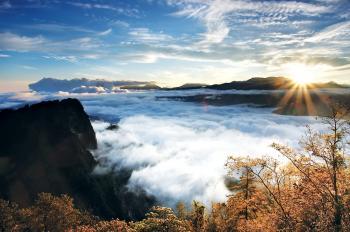

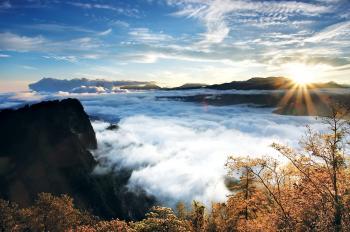
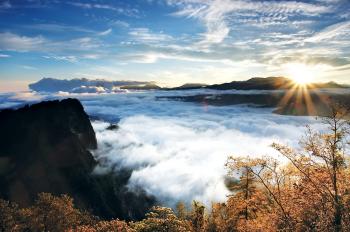
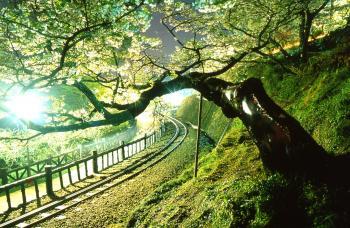
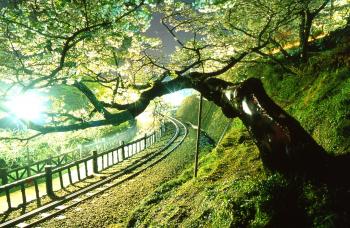
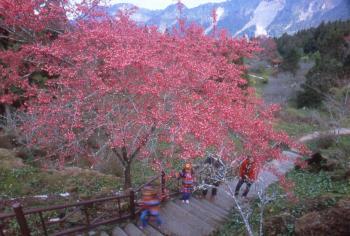
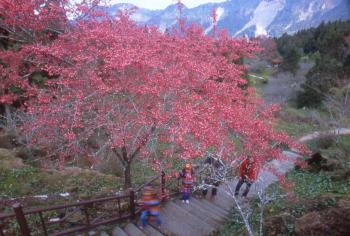
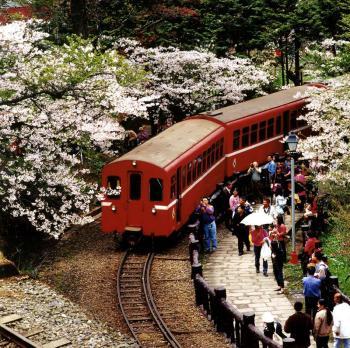
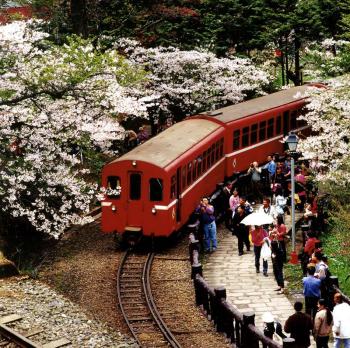
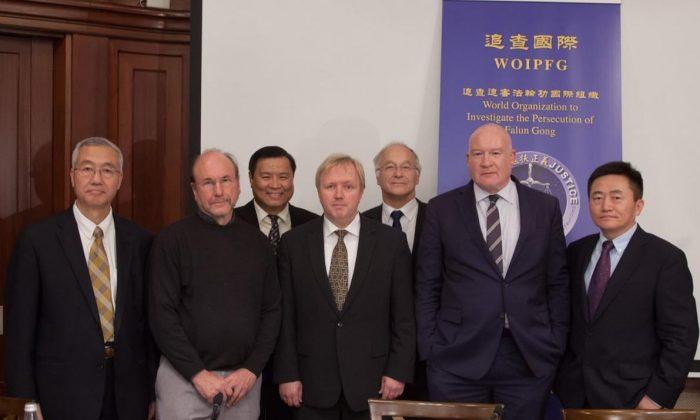
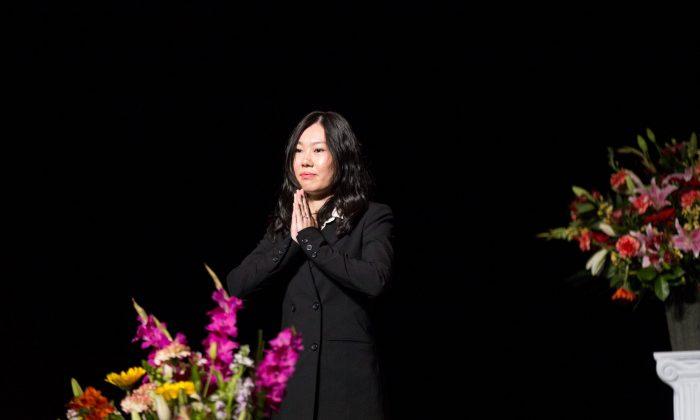
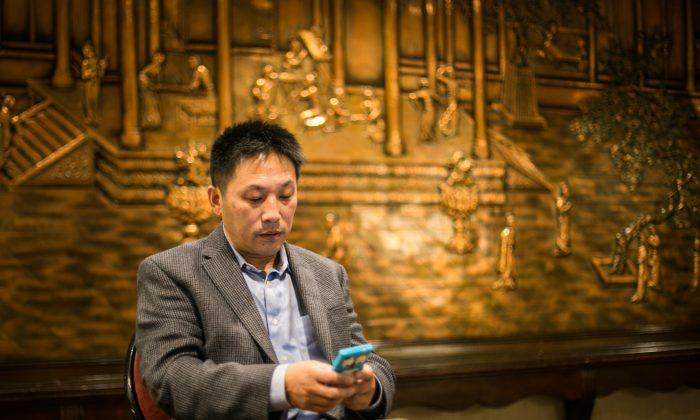

Friends Read Free